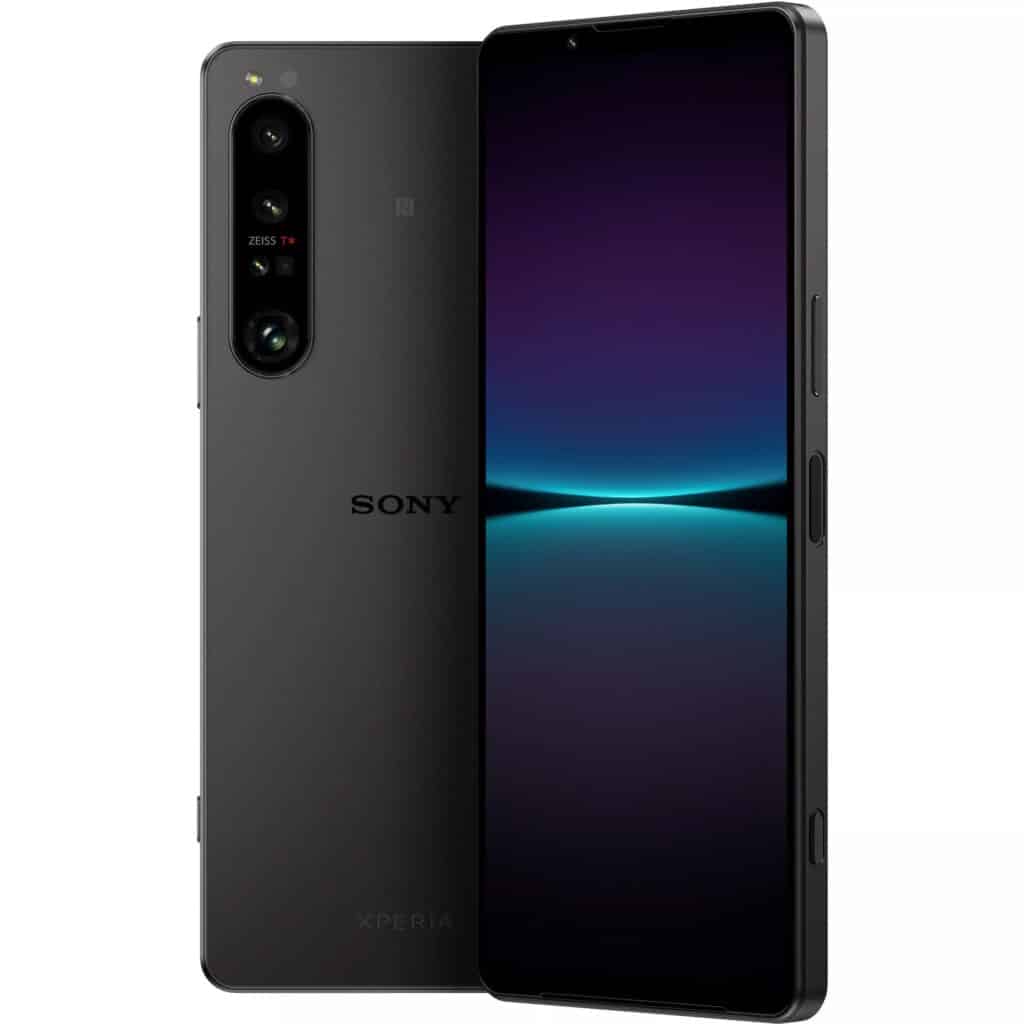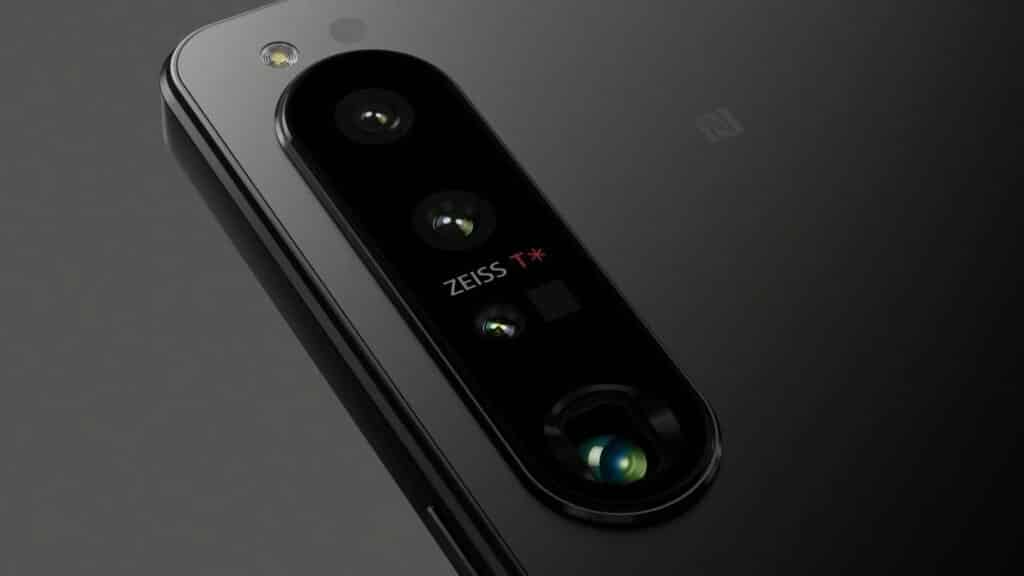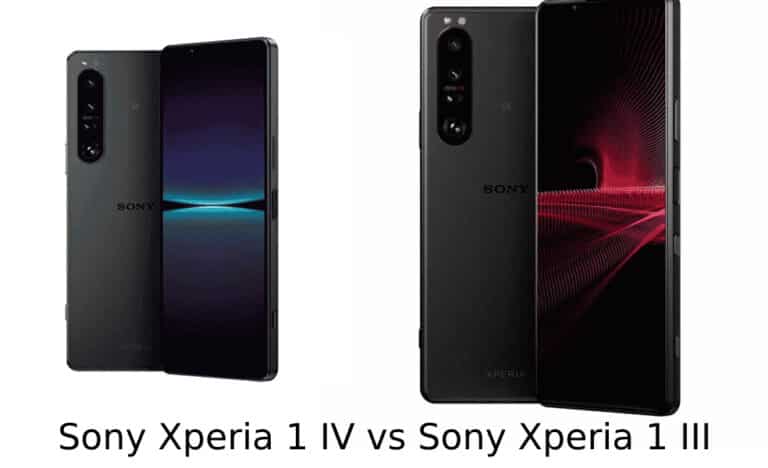The Sony Xperia 1 IV was just unveiled. However, it has many similarities with its predecessor, the Sony Xperia 1 III. For instance, in the battle of Sony Xperia 1 IV vs Sony Xperia 1 III, the two share a triple sensor, 12-megapixel camera system, and the majority of screen characteristics, and the proportions are nearly identical. One of the handset’s charming aspects is its steadfast hold on increasingly odd features for a flagship. Like the preservation of a 3.5mm headphone socket, an SD card slot, as well as a notification light, so long may this remain.
But how does Sony Xperia 1 IV stack up against its direct predecessor, the Sony Xperia 1 III? Given what we can tell at this initial stage, they appear the same, cost the same, and do the majority of the same jobs as one another. So, is the Xperia 1 IV an update worth it? Here’s how the two phones differ.
What will you see here?
Sony Xperia 1 IV vs Sony Xperia 1 III – Price & Availability


The Sony Xperia 1 IV was released in the United Kingdom and Europe on June 16. However, it will not be available in the United States until September 1. The United States will receive a device with 512GB of storage for $1,599. While the United Kingdom and Europe will receive a 256GB model for £1,299/€1,399. In Australia, neither phone is accessible. Whereas, the Sony Xperia 1 III costs $1,299 at launch in US and UK.
These are two expensive phones, then, but the older Xperia 1 III is the cheaper of the two.
Sony Xperia 1 IV vs Sony Xperia 1 III – Design

There’s so slight change in design between the Sony Xperia 1 IV and the Xperia 1 III. Therefore, it won’t matter which you select if you’re picking between them in terms of style, and you won’t notice any difference in design if you’re upgrading.
The Xperia 1 IV and Xperia 1 III both feature the flat-slab design that fans have come to expect from Xperia handsets, with bezels at the top & bottom of the display and plain, squared-off borders. Both have glass on the back – Corning Gorilla Victus in the case of the Xperia 1 IV – a vertical camera unit in the top left corner of both, and a special camera shutter key on the right edge – something the premium Xperia devices have long had.
Both the Sony Xperia 1 IV as well as the Xperia 1 III has measurements of 165 x 71 x 8.2mm, whereas the new phone weighs just one gram more at 185g. As far as recent flagship phones go, they’re both fairly small. The Xperia I IV lacks the dedicated Google Assistant key that was included with the Xperia I III. That was always redundant, so it’s arguably an improvement.
Aside from that, both devices are water and dust resistant to IP65 and IP68 standards, and they both contain a front-facing camera in the top bezel of the screen.
Sony Xperia 1 IV vs Sony Xperia 1 III – Display

The 6.5-inch AMOLED panels of the Xperia 1 IV and Xperia 1 III have an extremely tall 21:9 aspect ratio. They also have the same native 3840 x 1644 or 4K display, which distinguishes them from their 2K competitors. With their common absence of a selfie notch and front-firing stereo speakers, both of these phones are strong contenders for the best pick for moviegoers. You’ll be in cinematic bliss if you can find a 4K film to stream or download.
The brightness is where the Xperia 1 IV varies. Both phones also support a 120Hz refresh rate. The 2022 flagship is said to have a 50% brighter display than its predecessor, as well as Real-time HDR capability. This should make everything on the Xperia 1 IV display punchier and more colorful, providing a better visual experience for images and video.
Sony has made an unusual decision to place the fingerprint sensor behind the power button all along the right-hand edge of both smartphones, instead of beneath the display.
Sony Xperia 1 IV vs Sony Xperia 1 III – Camera

The camera is where all the Xperia 1 IV has seen the most upgrades. The Xperia 1 IV includes three rear cameras: a 12-megapixel primary camera with a 24mm lens plus optical image stabilization, a 12-megapixel 16mm lens, and a 12-megapixel Optical Zoom lens with an 85mm – 125mm equivalent with OIS. There’s also a 3D time-of-flight sensor.
Two smartphones feature a camera app that offers a manual shooting experience akin to the company’s Alpha cameras. It’s great for individuals who love their photography to be a hands-on experience. Sony’s triple 12-megapixel camera arrangement prioritizes rapid speed and huge, light-hoovering pixels over complex picture modification techniques like pixel binning. It’s another traditional photography-friendly touch.
With one or two small differences, both phones fundamentally share the same broad and ultra-wide hardware configuration. The Xperia 1 IV, on the other hand, gets a better 12-megapixel selfie camera than the Xperia 1 III’s 8-megapixel counterpart.
The Xperia 1 III’s front camera has a 12-megapixel sensor, whereas the Xperia 1 III does have an 8-megapixel sensor, therefore the newer gadget improves selfies as well.
Performance & Specifications

The processor receives an incremental boost to the Snapdragon 8 Gen 1 over the Snapdragon 888. Which is maybe the least shocking change of all. Both smartphones have 12GB of RAM and 256GB of internal storage, so there’s no distinction there. Moreover, they both allow microSD cards up to 1TB, which competitors like Samsung don’t.
Sony’s UI is largely standard, with simple menus & icons that don’t go too far from the Android 12 baseline. Sony does give a number of unique applications to address its image, cinematography, and audio specialties, but each one serves a purpose.
The Xperia 1 IV and Xperia 1 III also include a 3.5mm headphone port. This is a feature that many other flagship smartphones lack. However, for those who prefer to listen to music through speakers instead of headphones, the Xperia 1 IV boasts full-stage stereo speakers.
Sony has stated that the Xperia 1 IV would receive 2 Android upgrades & 3 years of security patches and that it will be a year younger than the Xperia 1 III.
Battery Life
The Xperia 1 IV also has a larger battery, with a 5000mAh cell in place of the 4500mAh cell in the Xperia 1 III, which should make a difference. However, keep in mind that the Xperia 1 IV’s display is brighter and has additional camera functions, which may use part of the greater battery capacity.
Both the Xperia 1 IV and Xperia 1 III include 30W rapid charging for a 50% charge in 30 mins, as well as wireless charging. However, the Xperia 1 IV does not come with a charger or a charging cord.
One aspect of Sony’s phones that tends to disappoint is their charging capability. Support for 30W isn’t all that impressive when competitors provide 80W and 120W charging, but that’s exactly what the Xperia 1 III and Xperia 1 IV offering.
Does Sony Xperia 1 III have 5G?
Aside from the camera, the Sony Xperia 1 III has all of the standard 2022 premium flagship features. This contains the Qualcomm Snapdragon 888 CPU, 5G capability, a large amount of RAM, a large amount of internal storage, wireless charging, backward wireless charging, plus fast wired charging.
Conclusion- Is Sony Xperia worth buying?
Simply told, the Sony Xperia 1 III may be the greatest Android phone for 2022. It makes nearly no concessions in almost every aspect and even includes a few features that rivals do not. Of course, its price, accessibility, and software may be its final detriments.
















